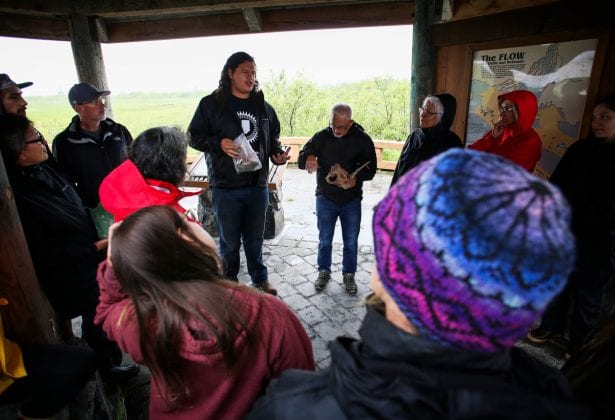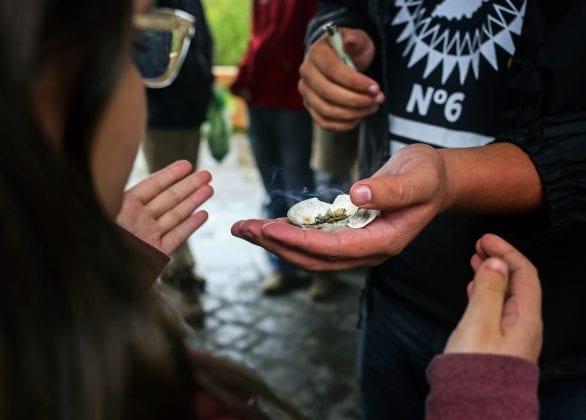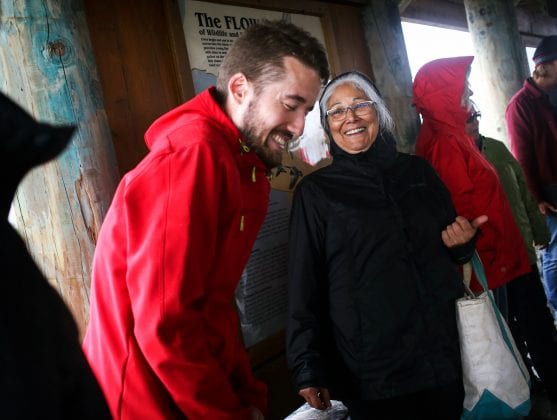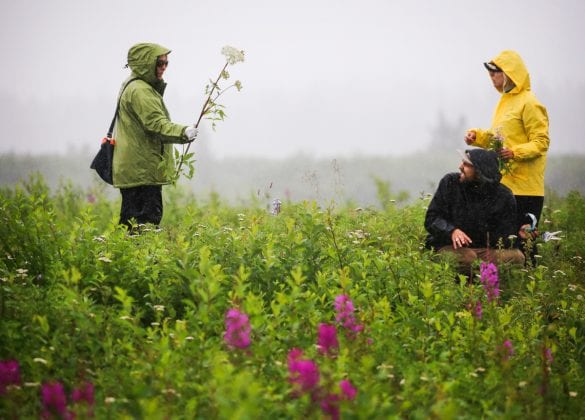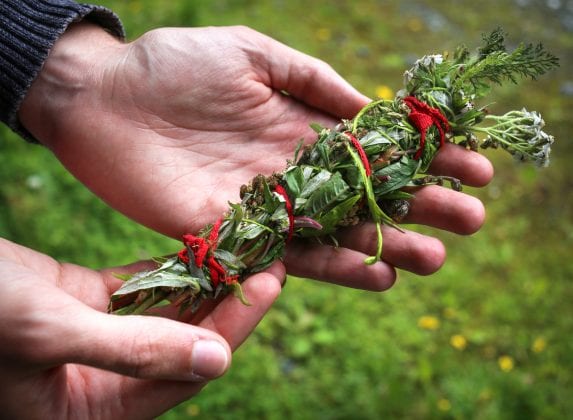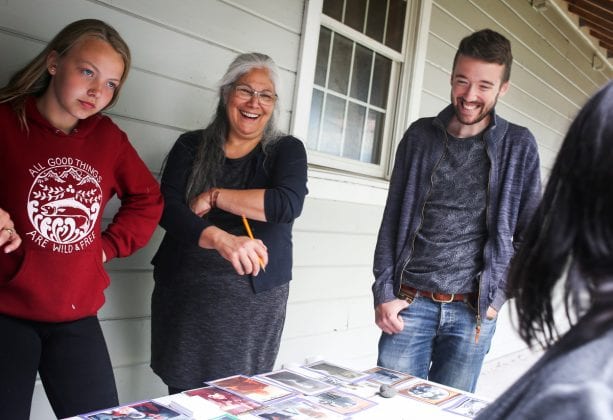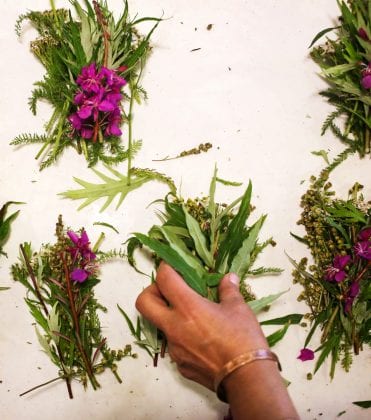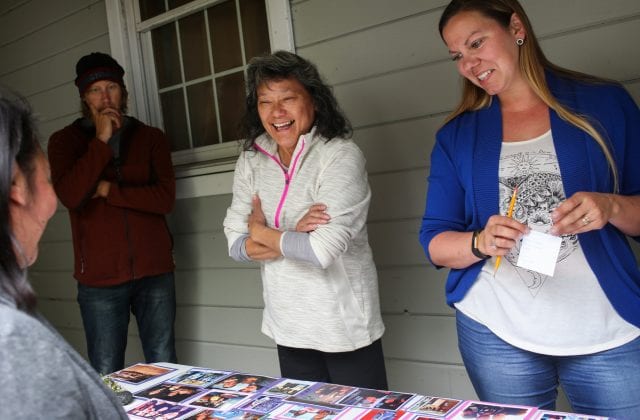What is a language? Is it alive? Can it die?
These are the questions that 29-year-old French linguist Guillaume Leduey asked himself as he became more familiar with endangered languages, such as Eyak.
“I don’t think it can die,” he said. “A dead language doesn’t mean anything to me. As long as there is some material or as long as it lives in people’s minds, even though they don’t speak it, they’ve heard it, that’s what matters.”
The fifth annual Eyak Culture Camp in late July focused on educating people on the Eyak culture, traditions, stories and language.
Initial funding for the camp came from an Administration for Native American grant as part of a three-year revitalization of the Eyak language, said Eyak Cultural Foundation President Jenna May.
The foundation hosts monthly Eyak Yaks, a program designed to practice language through Skype, plus summer and winter workshops in Anchorage and Cordova, and the Eyak Culture Camp.
This year’s camp featured workshops for the children, where they created a contemporary cooking show in Eyak, featuring a Hooligan recipe from May’s grandmother, Sophie Borodkin.
“I think it’s really important for Eyaks to return to their traditional homeland,” May said. “Somehow, it brings back memories, especially for elders. It allows the young people to understand the environment and why there were certain foods used.”
The camp, held at Orca Adventure Lodge from July 27-29, also featured language lessons from Leduey and a medicinal plant workshop by Pam and Jen Smith.
From Wisconsin to Alaska
Archeologist Robert Bearheart, 23, a recent graduate of Salish Kootenai College with a bachelor’s degree in tribal historic preservation, is a member of the Ojibwe Nation. At the age of 12, he began working with the Kenaitze Indian Tribe in the Kenai Peninsula, on culture camps, integration and archaeology.
Two years ago, Bearheart helped excavate a village site in Cooper Landing proposed for destruction by a campground expansion, working with David Guilfoyle, an Australian-U.S. archeologist and managing director of Applied Archeology International.
Applied Archeology International is comprised of a team of archaeologists, anthropologists, Geographic Information Systems specialists, illustrators, and facilitators who focus on solutions to culture heritage management.
During Eyak Culture Camp, Bearheart taught lessons on smudging.
“Smudging is a way to…cleanse your own personal area or yourself…anything you want, of negative energies or…evil spirits,” he said. For this he used cedar, sage, and a small amount of sweetgrass, from his medicine bag, and scooped it into a broken shell that served as a makeshift bowl.
“My people (Northern Wisconsin/Great Lakes Region Ojibwe’s) use cedar, mainly and sage,” he explained. “We use sweetgrass every now and then when we have it, but it’s not as common.”
He, along with Pam and Jen Smith, also taught the group the correct way to gather medicine; in the form of reciprocity, by leaving gifts when you gather, such as tobacco and having good thoughts during gathering.
These principles were carried through into the next activity, where participants gathered fireweed, wormwood, and yarrow, to create spirit bundles during the next day of camp.
What it means to be Eyak
May hopes that the Eyak Culture Camp will expand to five days next year, providing an opportunity for more time outdoors, including a smokehouse and fish camp.
“It just brings us together as a community…most importantly as role models for the kids,” May said. “It passes down a sense of pride, whereas our history has been a little dark and so with revitalization efforts, now the kids, they don’t know the fear, they don’t know the intimidation, and so they can stand up and say, ‘I’m Eyak.’, and be proud of it.”
May recalled the first potlach in 100 years that took place in Cordova, acknowledging the process of mourning the elders went through. Then, she recalled, “…gradually throughout the celebration process, when people started bringing…native foods, people started saying words in Eyak, people started talking about memories…the community…started coming together.”
“I think…1993 was a statement. A statement that we’re here, a statement that this is our land and that we exist as a people,” she said.
May talked fondly of hearing the children recognize Eyak words and articulate the pronunciation.
“Already, I see people recognizing words, sounds…so on the language itself, I see a lot…more than I thought actually that would happen,” she said.
Eyak Culture Camp reaffirmed that the language and culture are growing.
“Thanks to Dr. Michael Krauss who…was the one person who documented language and a lot of the culture in Yakutat and in Cordova,” May said. “We have the resources that we can use that are now being passed down to Guillaume Leduey, who has become fluent in Eyak, and so, because of their generosity, they’ve been able to work with us, not over us, but with us, to learn to have a continuity with the language.”
Learning the language
Seventeen years ago, in Le Havre, France, 12-year-old Leduey had just received the Encarta encyclopedia on his computer from his father.
It included a section featuring a few basic words in many different languages. Leduey found Haida words, spoken in parts of Alaska and Canada.
“Of course, I didn’t know anything about that language, except that I could listen to it and it sounded different from everything that I could have heard in the past,” Leduey said.
Researching the language on the Internet, he stumbled upon Krauss’ Alaska Native Language Map, which identified all Native languages spoken in Alaska, plus the number of speakers for each.
“… next to Eyak was just the number one,” he said. “I started wondering why there would be only one speaker left. I didn’t know anything about endangered languages at all, and I thought, well, one speaker left, that means it’s in danger, so I should probably help and try to start learning it.”
He began searching for tapes, texts and information on the Eyak language.
“I will always remember, I sit on my parents’ bed and I start listening to the tape and reading the tale…I could read it along and I called my mom, ‘Mom, mom, I can follow it! I can follow!’,” he said. “I didn’t understand, but of course I could follow it and that was my first contact with this language basically.”
That tale was “In Honor of Eyak: The Art of Anna Nelson Harry” by Michael Krauss, who had transcribed traditional tales in Eyak from recordings by Anna Nelson Harry, one of the last fluent Native speakers.
Leduey is now a linguistic research assistant for Krauss, with whom he has spent weeks learning Eyak and entering the dictionary words into a database, to eventually be published.
In addition to Eyak, Leduey speaks French, English, Georgian, and Lithuanian.
Leduey has attended in person, or via Skype, all of the Eyak Culture Camps.
“I do have the language, but I don’t have the culture so I’m learning,” he said. “It’s a game of give and take, you give and they give back to you, also. There was a sense of loss, and now there is a sense of growth.”
Visit the website, www.eyakpeople.com, to learn Eyak via Elearning portals.
